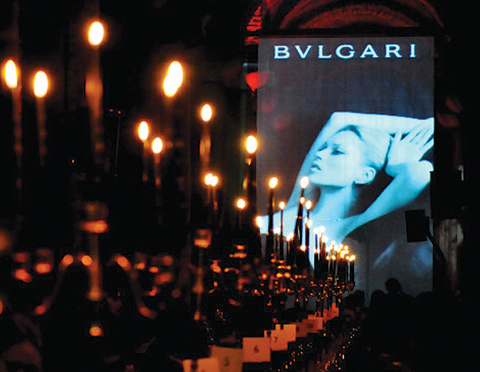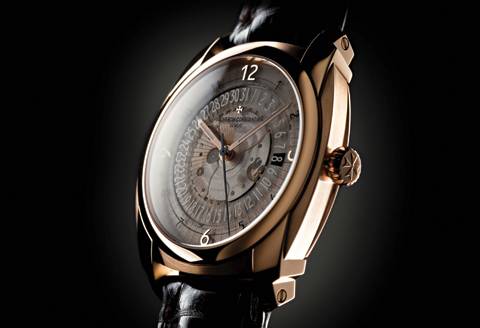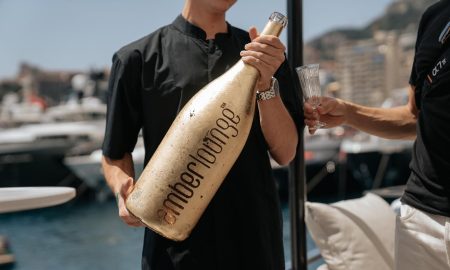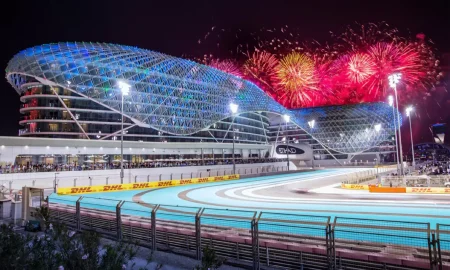Bulgari jewels have graced the necks and wrists of some of Hollywood’s most celebrated actresses-Angelina Jolie, Halle Berry, and Keira Knightley, to name only a few-not to mention royalty, dignitaries, and well-heeled women and men internationally. The family-run Italian luxury brand has, since its inception in 1884 by Greek émigré Sotirio Bulgari, become among the most profitable and well respected jewelry houses in the world.
But Bulgari devotees don’t just swoon over the one-of-a-kind jewels. Over the last 50 years, the Italian company has very carefully and successfully branched out into the accessories, watch, fragrance, and even hospitality industry. The company opened The Bulgari Hotel in Milan three years ago, owning 65 percent of the project (the other 35 percent owned by the Ritz-Carlton). A sister hotel in Bali followed in the wake of the Milan hotel’s success, and Bulgari is planning to open a few more hotels in major cities like Paris, London, New York, Tokyo, and Shanghai. Remarkably, it is still a family-run business, and for this reason, it is very careful to maintain the heritage and prestige of the family name.
That said, Bulgari isn’t a company to do anything without total involvement, dedication, and grace. The jewelry and watch sector make up more than half of the company’s business, but the fragrance division-only a 16-year development-and accessories division have brought in a considerable amount of profits (fragrance alone brings in 20 percent). For their first fragrance, Eau Parfumée au thé vert, it looked to expert French perfumer Jean-Claude Ellena as the nose. This perfume set the pace for what are now five major fragrance collections and the ninth largest fragrance business worldwide.
This is an important time for Bulgari. Not only did the company recently introduce the Jasmin Noir, but the New York store’s face-lift and Kate Moss fragrance campaign has sparked the interest of a younger demographic.
So, while the fashion industry doesn’t usually give two hoots for fragrance launches-nor should they with celebrity fragrances like Jessica Simpson and Mariah Carey’s tarnishing the elegant cache of the fragrance market-when a highly respected company like Bulgari debuts a new fragrance, fashion insiders know to expect only the best in presentation throughout the launch. The company invited a fabulous assemblage of such insiders-coming from Spain to Shanghai-to Istanbul, Turkey, to celebrate the launch of Bulgari’s 14th fragrance, Jasmin Noir. The fragrance’s noses, Sophie Labbé and Carlos Benaïm, flew in from Paris and New York respectively, and Bulgari CEO Francesco Trapani also joined in the festivities. “We decided to present Jasmin Noir in Istanbul for its sensual and mysterious atmosphere,” explains Trapani. “This magnificent city lies between the Mediterranean Sea, the ‘white sea’, and the Black Sea, crossroads of cultures, [and] the meeting point of Asia and Europe.”
And the Turkish city-third largest city proper and Europe’s most populated city-does compare, as Mr. Trapani explained, to Bulgari’s embrace of modernity and heritage, the future and the past, East and West. Remnants of hundreds of years of history make one feel tiny in comparison-the backdrop of the city is architecture dating back to the Roman, Byzantine, and Ottoman Empires-yet traditional neighborhoods and emerging artist and nightlife enclaves coexist seamlessly together.
The six-century-old Grand Bazaar is among the ancient and modern wonders of the city, with more than 4,000 shops within the serpentine indoor shopping complex, selling everything from diamonds and gold to rugs, pottery, and hammam goods. Not too far from the Bazaar, Eastern Rome Emperor Justinian I practically depleted his royal treasury erecting the dome-ceiling Hagia Sophia in the 530s and rebuilding it after a string of earthquakes. In fact, the basilica suffered damage from earthquakes over the next millennium, and whilst in repair throughout that time, Justinian’s successors added emblems and mosaics of their own beliefs overhead. The Ottomans converted the site to a mosque in 1453, building its signature minarets and inscribing verses from the Koran throughout, but the original mosaics were uncovered when Hagia Sophia became a museum in the 1930s. Now, both Islamic and Christian emblems mark the building, embodying the history of the city. Meanwhile, the 15th century Ottoman Topkapi Palace is filled with opulent vaulted chambers, religious relics, and a look at bejeweled loot from Ottoman conquests. The largest ancient cistern in Istanbul, built in the 6th century by Justinian, runs beneath The City of Seven Hills. Above ground, residents and tourists are whirring through Istanbul’s stylish streets while below ground water droplets are background music for visitors climbing down into the ancient cistern.
Istanbul has carried their bejeweled past into present. Old World hammams are being converted into luxury spas, former palaces are being transformed into luxury hotels-the new Four Seasons on the Bosphorus, for example-and a stylish, international set has moved into the city. Fashion trendsetters are searching out the Nisantisi District for textiles and housewares; dining at trendy rooftop eateries like Mikla (atop the Marmara Pera Hotel); and visiting contemporary and modern art at the new Istanbul Modern museum. Archaeologists and history buffs are sharing planes with designers and DJs, all bound for Istanbul.
So one can understand why a mega-company like Bulgari chose Istanbul to represent their bright future and begin the celebration of their significant past. Guests gathered at the Topkapi Palace to learn about the fragrance, a subtle but magnificent presentation put on by the company. The two noses carefully interpreted the layers of the scent to guests. “The name Jasmin Noir [represents] dualities: the contrast of white and black, the opposition of purity and sensuality,” explains Labbé. “The fragrance is born from all those dualities and from the complementarities of the two creators, a man and a woman. Carlos and I have teamed up to create a fragrance that would offer all those contrasts and facets.” Benaïm adds, “The Bulgari fragrances are intimately linked with iconic flowers expressing the glamour and the preciousness of the brand. Following Rose Essentielle, jasmine was the obvious choice. To me, the scent of jasmine is a highly provocative and evocative smell. It takes me back to images of my childhood, where jasmine perfumed the air in my grandfather’s villa in Tangiers.”
Guests were able to sample the fragrance’s signature notes of jasmine, gardenia, and tonka bean while they sat on a terrace overlooking the Golden Horn and the Sea of Marmara. Following the presentation, Bulgari’s selected guests enjoyed dinner underground in the ancient cistern, which does not typically welcome events. Just as Bulgari seamlessly embraces modernity and heritage, the future and the past, the meeting place was the perfect setting for the motley crew of guests, all dressed in unique styles from around the world. With the water droplets creating soothing background noise and candles lighting the long communal table, the meal was, like the company, graceful and effortlessly elegant.
This is an important time for Bulgari. Not only did the company recently introduce the Jasmin Noir, but the New York store’s face-lift and Kate Moss fragrance campaign has sparked the interest of a younger demographic. A new flagship store is open in Paris, and an exhibition of celebrated vintage pieces, Between Eternity and History 1884-2009, is slated to run this spring at the prestigious Palazzo delle Esposizioni Museum. The year 2009 will mark the official celebration of the prestigious brand’s 125th anniversary, which certainly will be celebrated in style.























